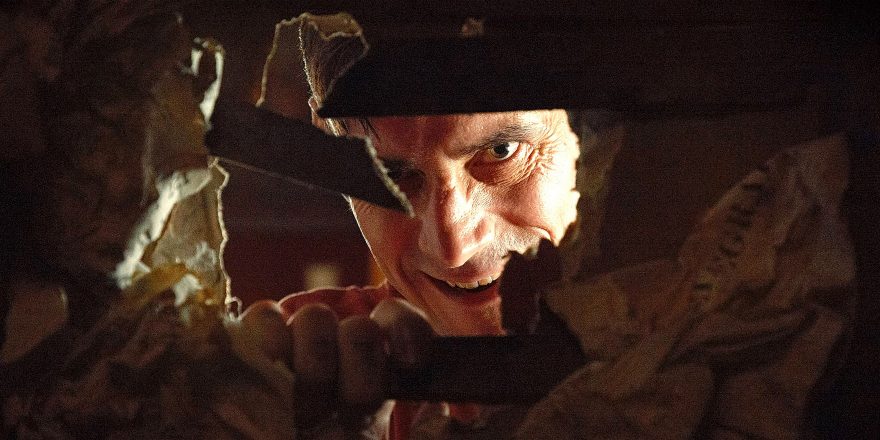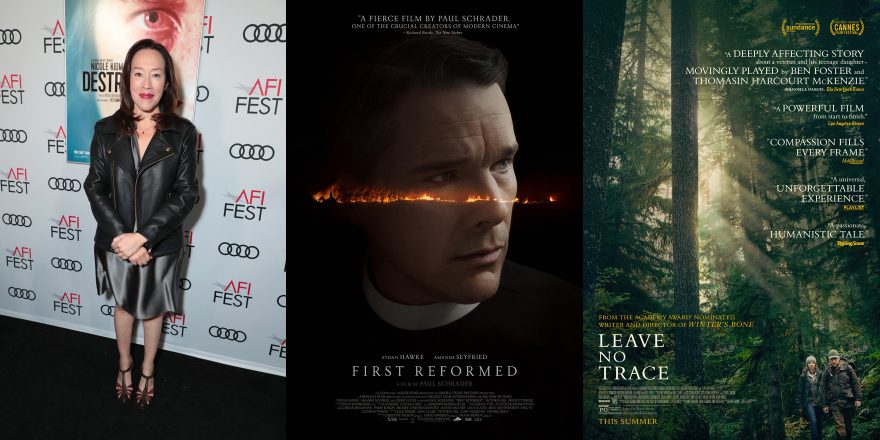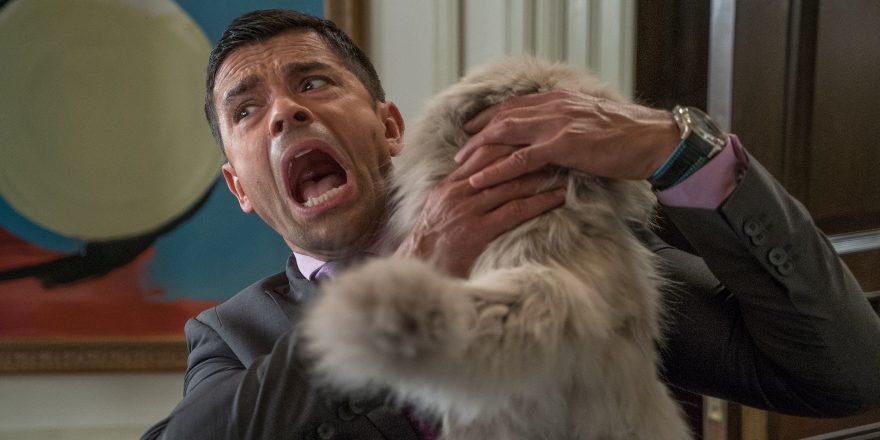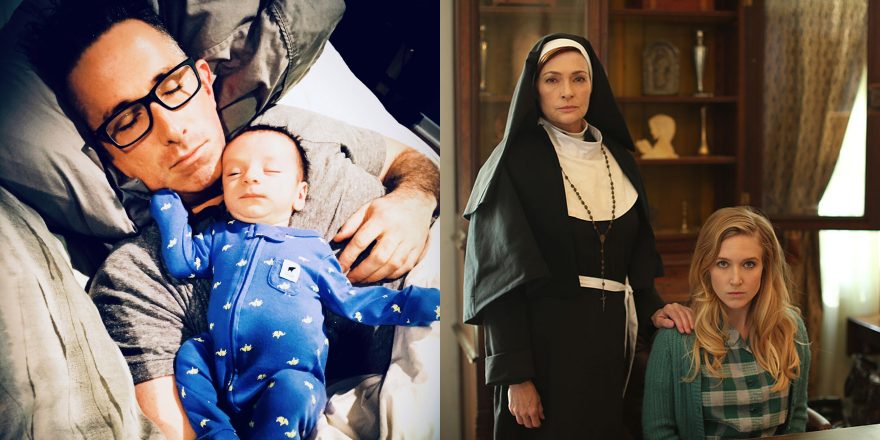The house stands on the corner of a sunny suburban street like a high-school football star who also happens to deal hard drugs. From the outside, everything appears normal and charming … but there’s an unpleasant intensity as you approach.
“Do you want to go inside?” asks Greg Newman, the film executive who has recently secured the property. I crouch in the grass to get a more dramatic view of the third-floor windows. “I guess we’d better …”
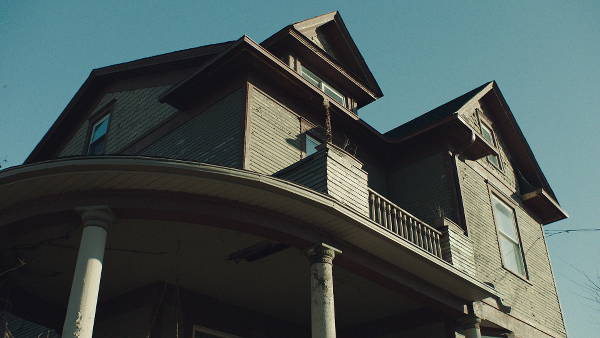
Up until this point in my career, I’ve only produced films. Although I always intended to write and direct, the journey to get there took a long time because there were so many fun movies to make with other filmmakers first. How do you say no to collaborating with talent like Adam Wingard, Simon Barrett, E.L. Katz, Karyn Kusama, Mike Mendez, Steven C. Miller, Trent Haaga, Sarah Adina Smith and Ted Geoghegan? One movie led in to the next and suddenly nearly a decade had flown by.
Now I’m standing in the suburbs of Chicago about to finally write and direct my own film because a company who financed and distributed some of my previous projects had bought a house that turned out to be haunted. Greg wanted to make a movie there. It was my job to figure out what story to tell.
So, how does one go about shooting a horror film inside an actual haunted house?
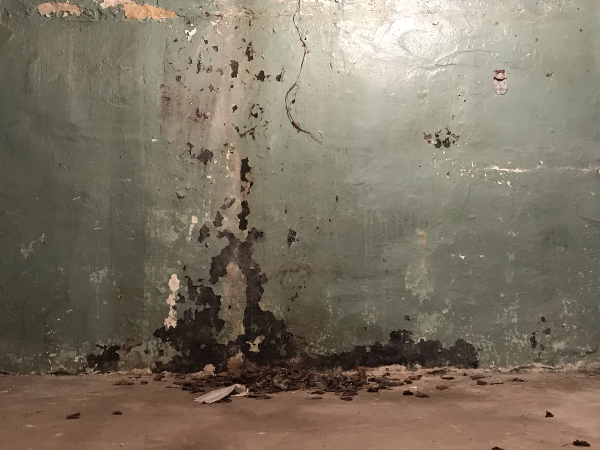
The local rumors about the place were fairly consistent. At one point it was a bordello. During that time, Sadie, a young girl who lived there, was murdered, her body found half-buried by the nearby train tracks. Her face had been disfigured. People passing by still swore they would see her up in the third-floor window. Sarah, another woman who worked at the brothel, also died. The official cause of death was listed as “yellow fever,” but not everyone believes that story because the body went missing.
The interior of the house resembles a battered billboard, the discarded layers of various renovations from different eras peeling back to form an abstract collage. A clash of aesthetics and styles that don’t belong together. Some rooms are painted in ’80s pastels. Others feature wallpaper that nods to the Victorian heritage of the house. The attic is a design mystery. The basement is pure Cronenberg, it’s pale fleshy walls looking like a set from Videodrome.
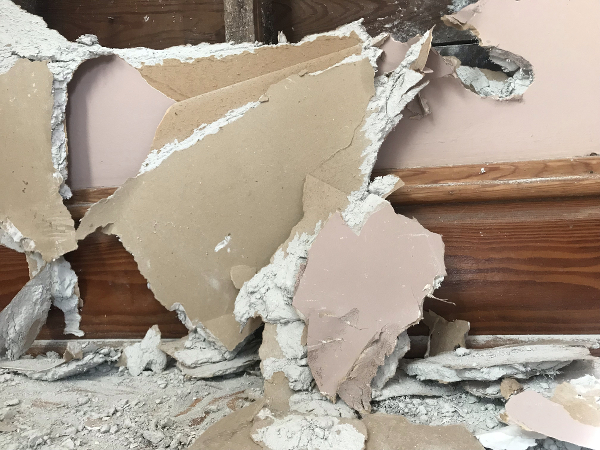
You stand in the dusty silence and wait for the house to speak to you.
The sunlight dances across the wallpaper. Shreds of carpet cling to the hardwood floor like dried scabs. The toilets are waterless, lidless, porcelain skulls, their mouths frozen in mid-scream. Other than the sound of your feet, the place is quiet. The house will not spill its secrets so easily.
You take in the colors. The ambiance. The layout. The frayed remnants from when it was someone’s home. The texture of the house as it is. The unfiltered truth of it all.
The first trip was short, but the ambiance of the house provided the DNA to get started. Greg locked up the tomb and we drifted back into small-town America.
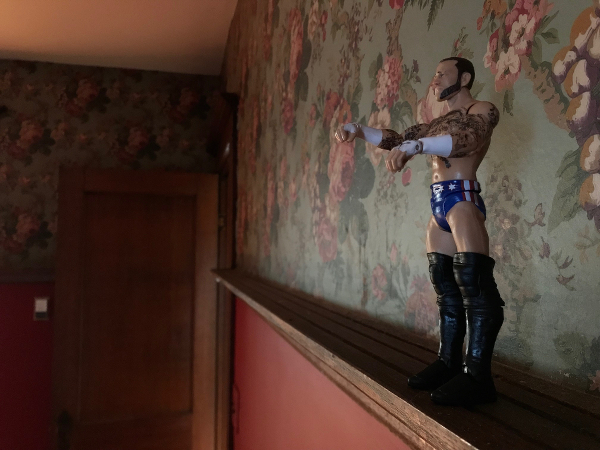
How does one honor the history of a haunted house without being exploitative?
There’s this house, this actual location with its own history of trauma, and then there’s your job as an artist to assimilate those details in an attempt to create something new, and hopefully, something of value. How do you tell a contemporary story in a house where the original horrors took place almost 100 years ago? I chose to focus on the power imbalance between the men who entered the house for pleasure and the women who died working there. My new film, Girl on the Third Floor, is not a retelling of the literal history of Sarah and Sadie’s experience in the house, but an exploration of the toxic dynamics that have caused misery and suffering in homes like it throughout history.
The idea that we are owed whatever we desire – even if it comes at the expense of the wellbeing of others – feels sadly pervasive in our culture. Over the past five years, as women began publicly sharing their daily experiences with harassment, shaming, assault and marginalization, the pattern that emerged was men simply acting without concern for how their actions impacted the women on the other side of the equation (whether willing participants or not). It was a shocking revelation to me, even though it shouldn’t have been.
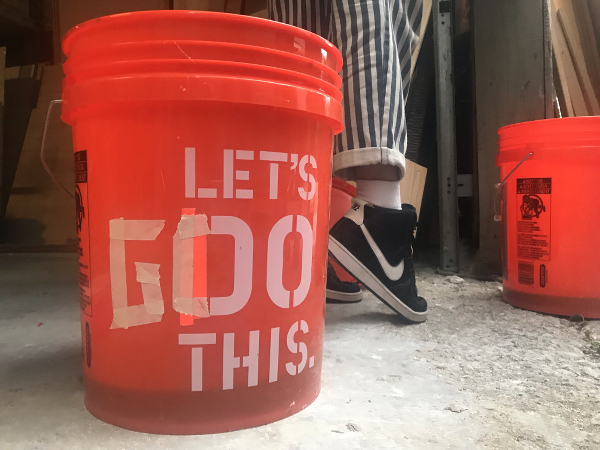
This was the theme I wanted to explore with the character of Don Koch – a man who isn’t corrupted by the house, so much as he’s exposed by it. Bursting through the front door with a brand new set of tools and the bravado of a man who has no idea just how unprepared he really is, Don has convinced his successful wife Liz Koch (who’s his only income stream) that this dilapidated house is the perfect place for them to start over after his own career choices nearly result in him going to prison. Don plans to fix the place up by himself, a proposal Liz is both supportive and gently skeptical of.
The film relies on the audience’s inherent sympathy for a protagonist, helped immensely by the immediate likability and charm of star Phil Brooks (aka CM Punk), before it begins to slowly peel back his carefully constructed façade to reveal the rot beneath. He’s not unsalvageable, but doing so will require a lot of effort. And as with the actual home renovation, Don is not exactly up to the task – although he likes to think he is.
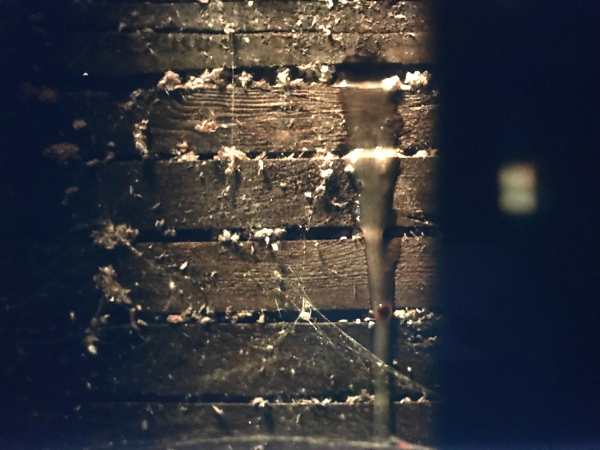
The story is initially told from Don’s biased perspective. His wife Liz is shrill and demanding, literally to be held at arm’s length. Whether he’s hiding his drinking or his sexual kinks, Don casually lies to her, in ways big and small, without hesitation. The house witnesses this behavior and decides to test his character further.
The first apparition Don meets is named Sarah (played by newcomer Sarah Brooks) who presents herself as an object of desire. She’s dressed and acts like a cover girl from a 1970s men’s magazine. It’s an act, but one carefully crafted to elicit a reaction. Don selfishly justifies being attracted to and subsequently having sex with Sarah as something he’s “earned.” After all, he’s working hard on the house all by himself. Doesn’t he deserve a little reward? It’s a flawed man’s outlook on life, and hopefully one the audience will come to recognize as such.
While Sarah died old enough to form an opinion about the dynamic between a man’s desire and a woman’s wellbeing (“All men really want is the power you give them,” she says, at one point), the second ghost Don meets was murdered before she even had a chance to form so sophisticated an understanding. Sadie was a child, sexually abused and disfigured by her time in the house and that experience has warped her ghostly appearance mentally and physically. Her face is a contorted mess of deformed flesh, vaginal folds, metastasized green glass and taut rope. She wears her trauma outwardly and is more childish in how she plays with Don.
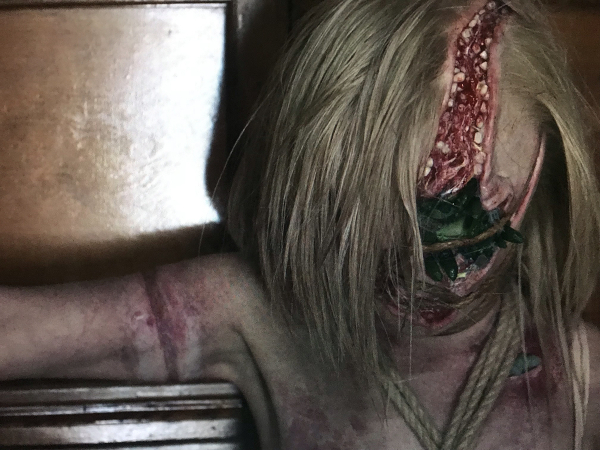
How these spirits engage with new arrivals to the house varies, depending entirely on the actions and nature of the person who walks through the front door. Act right and you’ll be fine. Give in to your lesser self and things are going to get very messy. The goo, slime, grease, “ectoplasm” and bile in this film are intended to be both metaphorical and biological.
We live a lifetime of choices. And not all of them are smart choices. Some cause harm. Others overlook the needs of those around us. Some are purposely destructive. The only chance we have at improving our lives (and society as a whole) is by taking the time to recognize the factors influencing our decisions and then consciously choosing a more responsible course of action. Don Koch lacks the ability to do that, and so he suffers. He’s a man unable to see past his own weaknesses.
Liz Koch is an entirely different story.
It is my hope that by re-introducing her character on her own terms, full screen and autonomous, that the point of the film becomes clear. Women should not have to live in fear of men. That statement goes for women like Liz Koch who handicap their own needs by supporting the fragile egos of their partners, it goes for the victims of childhood sexual abuse like Sadie, and the casual disposability of a sex worker like Sarah, a woman who was “loved by the town” but not enough that its citizens would investigate what really caused her death.
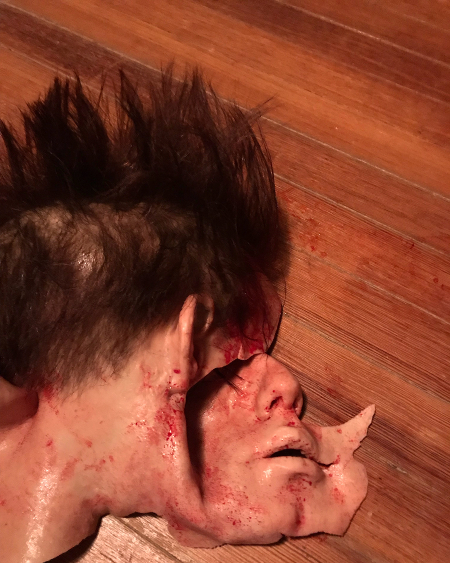
That may seem a bit presumptuous for a low-budget horror film – to take a local ghost story and weave it into some sort of angry battle cry for a more compassionate and balanced treatment of women. And the audience may question how effectively the movie explores the idea of liberating women from the obligation of putting the needs, wants and feelings of men before their own in order to ensure their safety. This idea may feel at odds with the film simultaneously encouraging men to take more responsibility for their own actions.
But throughout the writing process, as I thought about my first visit to the house, and remembered the feel of wrinkled wallpaper and the smell of sad debris hiding in the corners, I tried to ask, what was this house like for the women who actually lived and died there?
Girl on the Third Floor felt like the most artistically and emotionally honest answer to that question.
All behind-the-scenes images by Travis Stevens.



